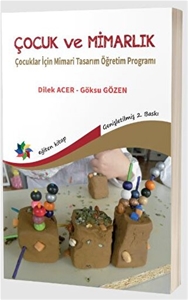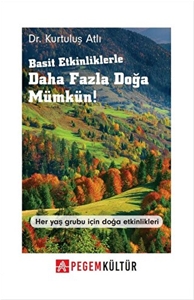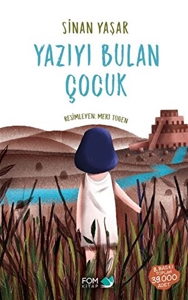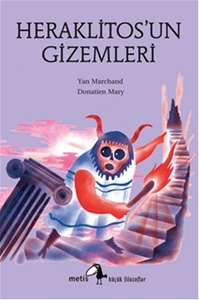Anasayfa > Kitap< Geri dönün
Çocuk ve Mimarlık: Çocuklar İçin Mimari Tasarım Öğretim Programı
Yayınevi: Eğiten Kitap
ISBN: 9786256946552
240,00 TL (KDV Dahil)
Kargoya verilme süresi: 1 - 5 İş Günü
Yazar: Dilek Acer, Göksu Gözen
Cilt tipi: Karton Kapak
The time is NOW, around the world, to change the way we educate our children P/K -12+. Dilek Acer is doing just that, with her second book Çocuk ve Mimarlık: Çocuklar İçin Mimari Tasarım Öğretim Programı that promotes learning with intense creativity and creative problem solving for teachers and children throughout Turkey. She shows that the work of the artist, designer, architect, educator and environmentalist are the same and are extremely important for our survival on this planet. We have a challenge in education, to preserve the built, natural and cultural environment.
As a professor at the University of Ankara in Turkey, she has established an atelier for young children and reaches out to her trained university students, who have become teacher facilitators of workshops to train teachers with a new way of using our universe and planet earth as a medium for learning. The environment of Turkey and the world, becomes the textbook for this education program. The ideas inherent in the universe and the built environment, are perfect for learning math, science, history, art, architecture and stewardship in the context of real life education. Students everywhere are telling to "make our education REAL.”
While using the environment as a teaching-learning tool, Dr. Acer shows how to integrate subject matter areas through Design thinking, borrowed from the Architectural Design studio and the way architects are trained to think holistically. The Turkish classroom, like her atelier, must become a studio, giving power to students to create and come up with ideas and solutions, for what we now know as environmental degradation. Her series of design experiences for students P/K-12 are designed as a scope and sequence of accumulative, simple to more complex thinking for all students.
Dr. Acer offers an alternative to textbook learning. Instead, she invites students to use the real world as a pallet for their thinking, knowledge, understanding and eventually wisdom about their world in which they live. Our children are our future. Acer offers a new way to develop student sensitivity to the organizing principles of design into close scrutiny of form and function. Through biomimicry, her students, just as architects do, translate those principles into drawings, models and manifestations of their internal ideas. These ideas could be a design for a garden, furniture, buildings, transportation systems, city planning, clothing and more, including something very miniscule.
V
The studio design model by which architects are trained is a borrowed model for learning, where students have more power to create and the teacher becomes a constructive critic, prizing uniqueness and less verbal imparting of knowledge through talk and textbooks. This way of learning uses both verbal and visual ways of teaching and learning as in a creative studio. The philosophy that supports this applied way of learning is that of Experimentalist, John Dewey (education as experience) and that of Norwegian Arne Naess, who posits the need for ecosophy or ecoism as a basis for current and timely curriculum.
The Design process and methodology is really a form of the modified Scientific Method which all students should be learning:
1. There is a felt difficulty about some problem that needs to be solved.
2. A hypothesis is made, perhaps with a schematic sketch of something with arrows and circles as architects do on napkins when talking to a client.
3. Then comes the design, drawn with pen or pencil or maybe in an introductory model form. The drawing can be labelled with words.
4. Then the model is built or tested in many ways (research and data gathering). Some conclusions are made.
5. Then the architect and or students accepts, rejects or modifies his or her solution and moves on.
Dr. Acer has partnered with Anne Taylor of School Zone Institute and supports her program of Integrated Design Education along with other design educators in Japan, Singapore, Taiwan, China, Mexico, Bolivia and the United States. Acer’s second book adds to the first edition and should be read by all teachers, everywhere. This is a student centered model of education that includes integrated subject matter and is a gift from our Schools of Architecture, that of design and holistic thinking and keen environmental awareness for sustainability. Dr. Acer presents one of the best books for a current transition to a new way of learning and teaching. I am proud to call her an innovative colleague!
Anne Taylor, Ph.D.
Distinguished Professor of Architecture Emerita
Türkçe
2023
177 Sayfa
19 x 7 cm

 Basit Etkinliklerle Daha Fazla Doğa Mümkün!
Basit Etkinliklerle Daha Fazla Doğa Mümkün! Gökbilimciler - Genç Bilim İnsanları
Gökbilimciler - Genç Bilim İnsanları Yazıyı Bulan Çocuk
Yazıyı Bulan Çocuk Heraklitos'un Gizemleri
Heraklitos'un Gizemleri Şarkılarla Matematik - Matematik Becerileri İçin Şarkılar, Müzik CD'si ile Birlikte
Şarkılarla Matematik - Matematik Becerileri İçin Şarkılar, Müzik CD'si ile Birlikte